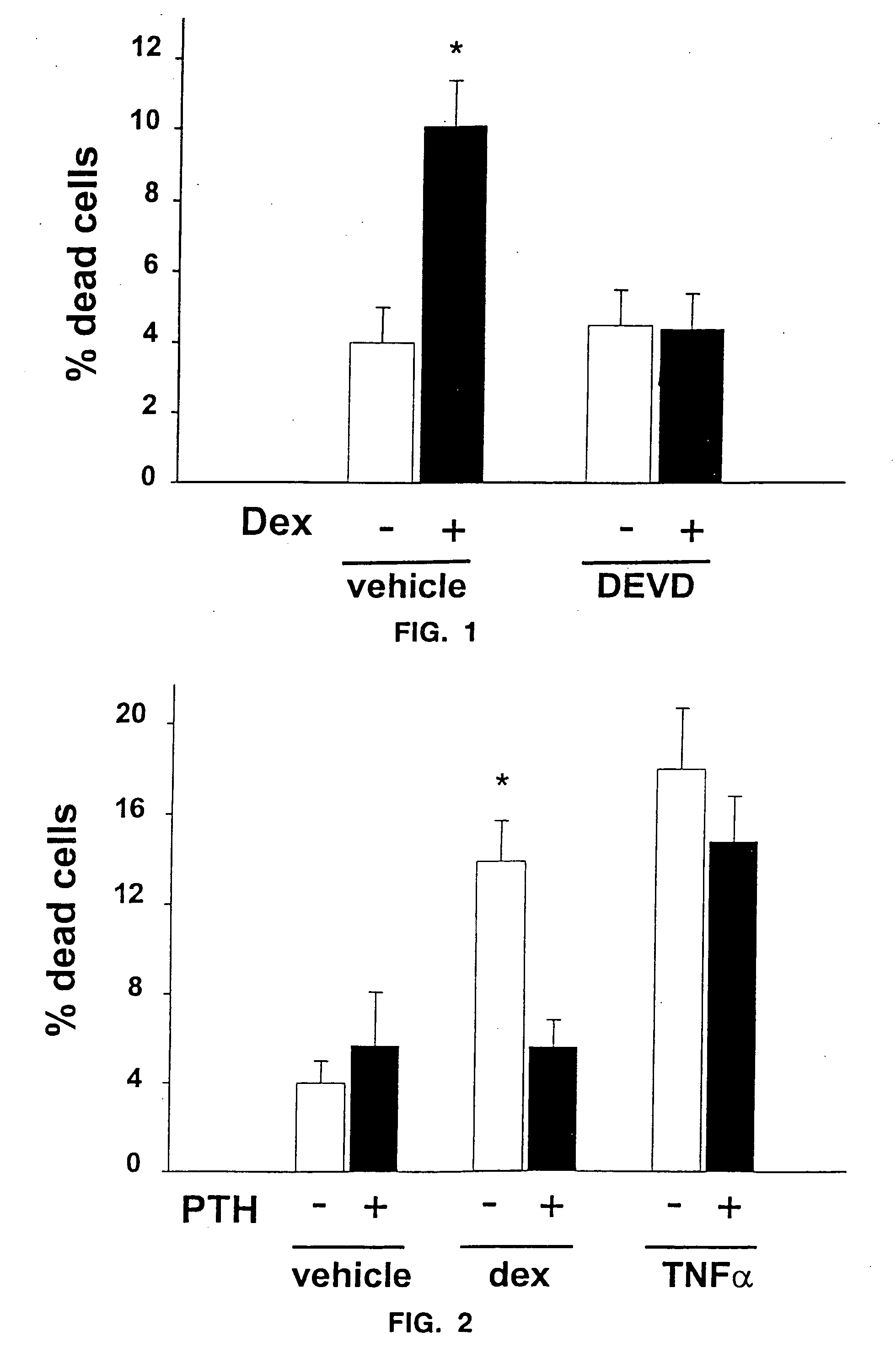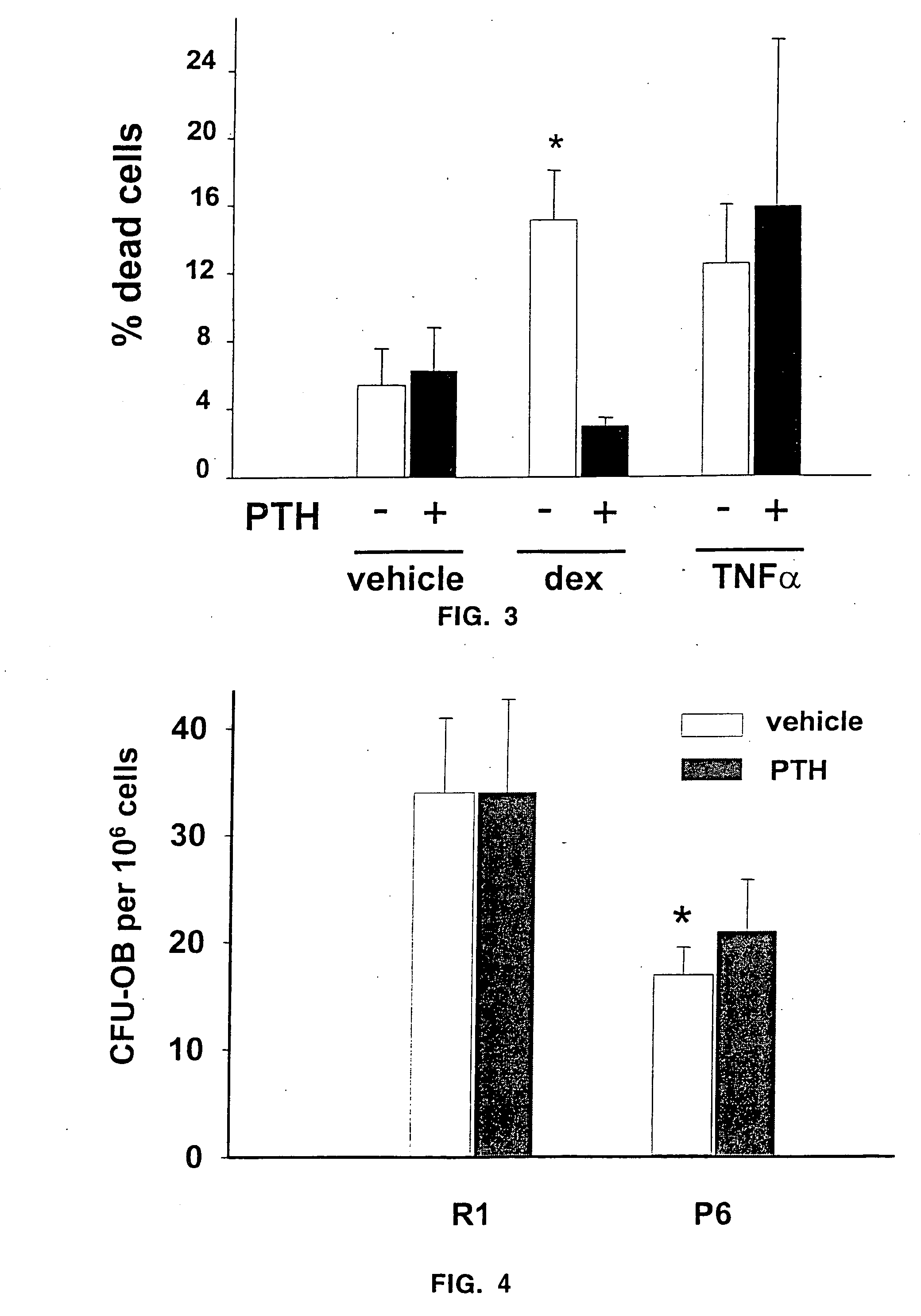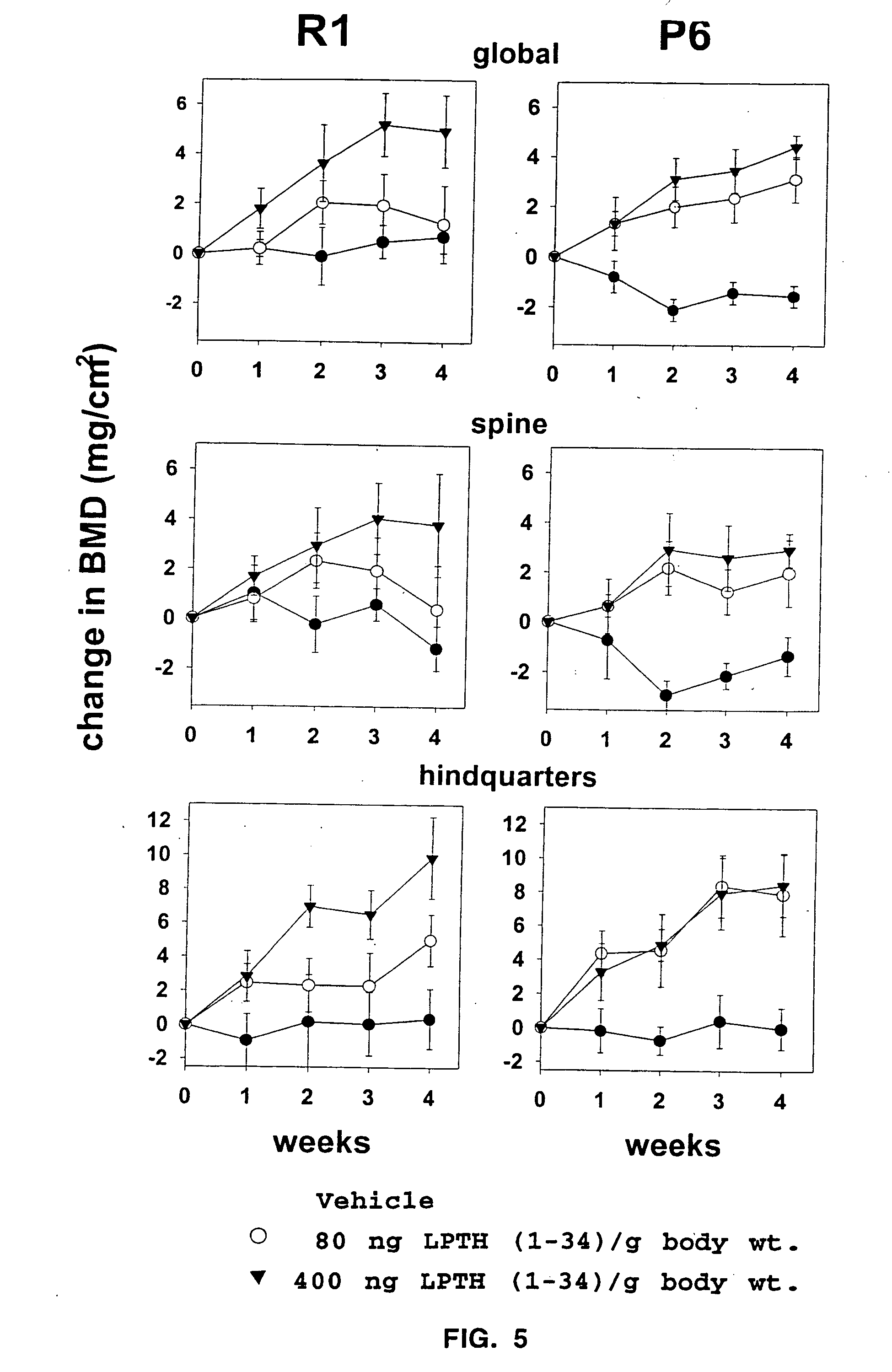Methods of screening for apoptosis-controlling agents for bone anabolic therapies and uses thereof
a technology of apoptosis control and bone anabolic therapy, which is applied in the field of bone physiology, can solve the problems of glucocorticoid therapy sometimes developing collapse of the femoral head, affecting the rate of bone remodeling, and underlying uncertainty, and achieves the effect of increasing apoptosis
- Summary
- Abstract
- Description
- Claims
- Application Information
AI Technical Summary
Benefits of technology
Problems solved by technology
Method used
Image
Examples
example 1
In Vitro Effects of PTH
[0046] The number of osteoblasts, a critical determinant of bone formation and bone mass, depends both on the birth rate of these cells, which reflects the frequency of cell division of mesenchymal precursors, and on their life span, which reflects the timing of death by apoptosis. In vivo evidence indicates that intermittent administration of parathyroid hormone(1-34) increases bone formation and BMD in mice and that these changes are associated with decreased osteoblast and osteocyte apoptosis, but not with increased production of progenitors in the bone marrow.
[0047] To determine the mechanism of such actions, the effects of parathyroid hormone(1-34) on the apoptosis of cultured osteoblastic cells isolated from neonatal murine calvaria and the MLO-Y4 osteocyte cell line (provided by L. Bonewald) were examined. Chromatin condensation, nuclear fragmentation, and DNA degradation—cardinal features of apoptotic cells—were monitored by microscopic examination o...
example 2
Calvaria and MLO-Y4 Cells
[0049] Osteoblastic calvaria cells (9) were cultured in αMEM (Gibco-BRL, Grand Island, N.Y.) supplemented with 10% FBS (Sigma Chemical Co., St. Louis, Mo.). Murine osteocyte-like MLO-Y4 cells stably transfected with EGFP were cultured on collagen coated plates in (MEM supplemented with 5% FBS and 5% bovine calf serum. Cultures were maintained for 6 hours in the presence of 10−7 M dexamethasone without or with preincubation for 1 hour with 10−8 M bPTH(1-34) and fixed in neutral buffered formalin. The pyknotic fragmented nuclei (arrows) typical of apoptotic cells were visualized with Hoescht 33258 fluorescent dye (Polysciences, Inc., Bayshore, N.Y.), used at a concentration of 1 μg / ml in 0.5 M NaCl, 10 mM Tris-HCl, 1 mM EDTA, pH 7.4) in osteoblastic calvaria cells, and by EGFP fluorescence in MLO-Y4 osteocytes.
[0050] Osteoblastic cells were isolated from calvaria of 3- to 6-day-old C57 / B1 mice by sequential collagenase digestion. Cells were cultured for 5-8 ...
example 3
Mice
[0051] 4-5 month old male or female SAMR1 and SAMP6 were given daily injections of vehicle (0.9% saline, 0.01 mM β-mercaptoethanol, 0.1 mM acetic acid) or 400 ng / g body weight of hPTH(1-34) (Bachem, Torrence, Calif.) dissolved in vehicle (n=6-7 per group). Mice were fed a standard rodent diet (Agway RMH 3000, Arlington Heights, Ill.) ad libitum. The BMD of the spine and hindquarters was determined one day prior to initiation of the experiment (baseline scan) and at weekly intervals thereafter using dual-energy X-ray absorptiometry (QDR 2000, Hologic, Inc.) as described previously (3). The evaluation of each scan was based on the exact positioning and region of interest placement of the baseline scan using the “Compare” technique (4).
PUM
| Property | Measurement | Unit |
|---|---|---|
| molar concentrations | aaaaa | aaaaa |
| molar concentrations | aaaaa | aaaaa |
| molar concentrations | aaaaa | aaaaa |
Abstract
Description
Claims
Application Information
 Login to View More
Login to View More - R&D
- Intellectual Property
- Life Sciences
- Materials
- Tech Scout
- Unparalleled Data Quality
- Higher Quality Content
- 60% Fewer Hallucinations
Browse by: Latest US Patents, China's latest patents, Technical Efficacy Thesaurus, Application Domain, Technology Topic, Popular Technical Reports.
© 2025 PatSnap. All rights reserved.Legal|Privacy policy|Modern Slavery Act Transparency Statement|Sitemap|About US| Contact US: help@patsnap.com



